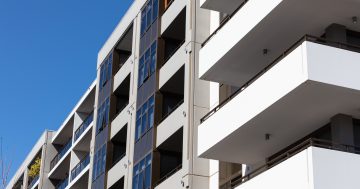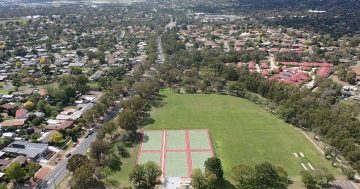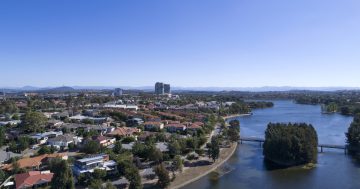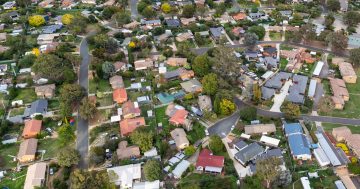
David Robertson from Bendigo and Adelaide Bank. Photo: Supplied.
Each quarter, David Robertson, Head of Economic and Market Research for Bendigo and Adelaide Bank, keeps us updated on the state of the ACT economy with a quarterly market update drawing on statistics from the Reserve Bank of Australia (RBA), Australian Bureau of Statistics (ABS), and Real Estate Industry of Australia (REIA).
April to June 30, 2018 quarter
Happy new financial year!
It’s about that time of year when we all need to sit down with our accountants and sort out our tax, while braving the cold winter days that make it that little bit harder to get out of bed in the morning!
But, while the weather may be chilly, the ACT economy is looking pretty sunny at the moment, with just a few areas for improvement that we hope to see across the next financial quarter.
Job market
As at the end of June, the unemployment rate in Canberra was just 3.6% – the lowest of any state or territory and well below the national average of 5.4%.
The job market remains strong, with reasonable growth in jobs across health, hospitality, education and business services.
Wage growth remains low, though this is not just a regional problem, but a systemic issue facing Australia and other countries. One prevailing sentiment is that it’s due to technological innovation and increased use of artificial intelligence and robotics. Because neither are likely to slow down anytime soon, it’s probable that improving wage growth will require some level of tax reform.
We do expect to see some improvement during this new financial year, but it will be interesting to see how tax reform plays out in this domain.
Growth
The growth rate for the ACT (rate at which Canberra is growing) is on par with the rest of the nation, sitting at 3% compared to Australia’s GDP growth at 3.1%. The outlook for growth is pretty positive too, due to a higher-than-average population growth of 2% (compared to the national average of 1.6% as we slide over the 25 million population mark).
I would argue that above trend population growth is really positive, because it’s generally a key driver of economic growth. That being said, it does need to be matched with commensurate investment in infrastructure.
Spending
Consumer and business indicators show ACT retail spending, housing finance, and equipment finance are all running above trend.
Housing
Unfortunately, the housing market has been a little more challenging lately.
Housing prices in the ACT are holding up compared to other capital cities, but have fallen slightly in the last quarter. The median house price still sits at $650,000 (which is an increase of around 3% compared to this time last year), though unit prices are down. Auction clearance rates have also fallen slightly, sitting at around 65%.
The first home owner market remains very strong, up 80% compared to last year.
Overall, housing prices across the country are under a bit of pressure – some of which is due to regulators imposing “speed limits” on interest-only and investor lending.
The biggest challenge for the ACT in particular is the rental market. A period of undersupply in housing explains why housing prices are doing better, but median rent prices are up to $500 per week (an increase of 6% on last year). It’s cheaper to rent a unit or townhouse, which currently sits at an average $420 per week.
The ACT’s rental market was highlighted in the Reserve Bank’s statement on monetary policy recently, which noted that Canberra has the lowest rental vacancy rate of any major city (0.5% compared to a long term national average of 3%).
Vacancy rates do generally denote underlying issues with housing and rental affordability, even if the ACT is prone to a higher number of contract workers who may only plan to live in Canberra for a year or two.
We could talk about rental unaffordability being off-set by higher than average incomes, however not all families do enjoy a median income of $2,677 a week. So the median rent prices and lack of available rental properties are problematic for those who aren’t in a position to buy.
Hopefully next quarter we’ll see an improvement in wage growth and further gains in the first home owner market, and more being done to deal with the ACT’s significantly low rental vacancy rate.
Until then…
David Robertson




















